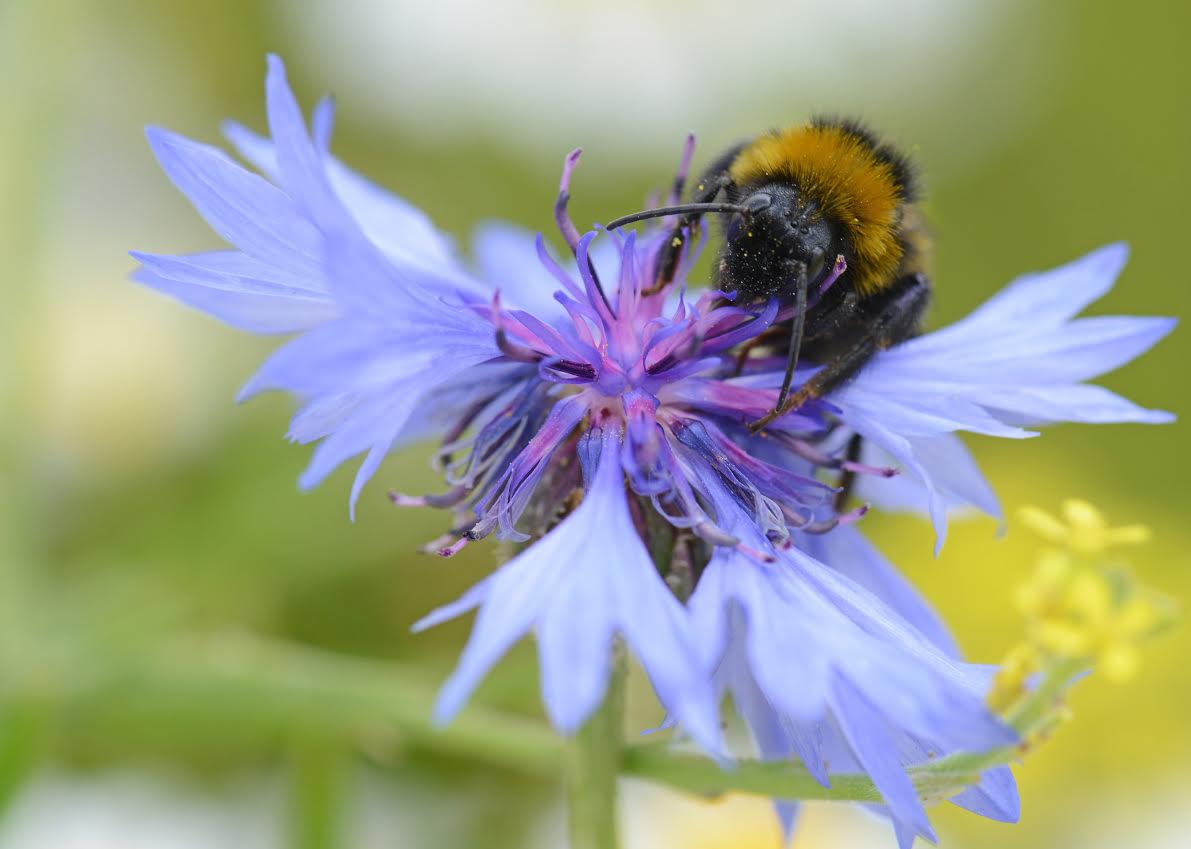
Farmers are making a huge contribution to increasing pollinator populations with new Operation Pollinator seed mixtures for field margins and pollinator habitats. The new areas established are already delivering a greater diversity of wildflower food sources, and supporting important pollinating insects.
With Pollinator Awareness Week events occurring across Europe this week (13-19 July 2015), leading independent entomologist, Mike Edwards, has identified significant increases in some of the key pollinator species in new wildflower areas on commercial farms.
“Against a backdrop of declining numbers of pollinating insects, we have seen encouraging results for some species, thanks largely to the efforts of farmers to establish wildflower habitats and the changes in cultivation techniques that help some ground nesting solitary bees,” advised Mr Edwards.
Monitoring of Operation Pollinator Annual Wildflower Mix habitats, has identified a number of valuable solitary bee species, including Andrena flavipes that is an important pollinator of oilseed rape, fruit and other crops.
The Operation Pollinator Annual Wildflower Mix offer established more than 400 hectares of new habitat over the past year.
Mr Edwards cited some of the flower species now included in the Annual Wildflower Mix as being especially important for solitary bees. Corn Camomile and Corn Marigold, for example, provide an early food resource and encourage bee populations, alongside OSR and the increased area of field beans this season.
“From the flavipes’ perspective, what is ideal are areas of annual wildflowers to support a first generation, and then perennial margins coming into flower and feeding a second generation that will give rise to early bee populations the following spring.”
Mr Edwards noted that field edges had seen a noticeable increase in nest sites, particularly in areas around the annual wildflower margins of the Syngenta Innovation Site in Hampshire, for example.
Further monitoring and scientific evaluation aims to quantify the real difference being made by farmers through ecological enhancement alongside productive field cropping.
Wildflower mix offer
Farmers and growers can once again take advantage of the outstandingly successful Syngenta Operation Pollinator Annual Wildflower Seed pack offer this autumn. In partnership with the Campaign for the Farmed Environment (CFE) and seed suppliers, Kings, it is set to repeat the 400 hectares of farmland dedicated to pollen and nectar wildflowers.
Operation Pollinator trials and growers’ experience have shown annual wildflowers are relatively easy to establish alongside conventional cropped farmland, using the same techniques, timing and cultivation equipment as establishing winter oilseed rape crops.
“Annual wildflowers can play an incredibly important role in feeding pollinators, alongside other ecological features, including perennial pollen and nectar mixes, hedgerows and grass margins,” reported Syngenta Environmental Initiatives UK Manager, Belinda Bailey. “Farmers have been extremely successful in providing pollinator friendly habitats for food and overwinter nest sites - to the point where the populations of some bee species have been increasing in recent years.
“This joint initiative with CFE and Kings fully supports our efforts to encourage even more farmers to get involved, and helping to create a more diverse range of habitats on farmland across the UK. It is an extremely powerful demonstration that productive commercial farming and positive ecological management can co-exist in the same field.”
Richard Barnes of Kings added: “The Operation Pollinator Annual Wildflower mix is based on sound ecological research of pollinator activity. It has been extensively trialed on farms as part of the Syngenta initiative to enhance growers’ oilseed rape yields. The growers involved have found it relatively easy to establish and manage the margins, with extremely positive results in pollinator activity and crop performance.”
